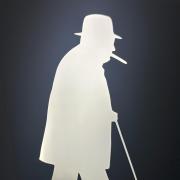
A Wimbledon pupil has won a national specimen drawing competition. Leslie Lee, 16, won this year’s Nancy Rothwell Award in the 15-18 category.
The winning drawing (above) shows the exterior and internal anatomy of a camel, and was praised as “simply stunning” by Timothy Pond, a Zoological Society London illustrator.
Leslie, who hopes to study medicine and become a doctor, heard about the competition from the Head of Biology at her school, and commented: “As a student studying both biology and art, I thought it was a fantastic opportunity, especially as I had a lot of time during the summer holidays.
“I spent a long time deciding which specimen to draw – I wanted to choose something unique and less frequently studied. After spending hours considering my options, I decided on the camel. The extreme environment it lives in has led to its distinctive adaptations and I was excited to find out more about this fascinating creature and study it through the opportunity of the competition.”
Prize winners received drawing equipment, money for themselves and their school, and a trip to the Royal Veterinary College to learn tricks of the trade from a professional animal illustrator.
“I used graphite pencil for the drawing on the bottom left, and for the detailed anatomical study of the parts inside the camel’s head, I used watercolour to make each part distinctly visible, and added acrylics and colouring pencil on top for the fine details.”
The competition celebrates the union of science and art. Leslie believes that studying science doesn’t mean you should neglect your creative side.
“Art and science both play an equally significant role in this competition. Although science and art are very different subjects, combining the two helps to add creativity in science which I think is very important. STEAM is an educational approach which is encouraged in schools and is the combination of sciences and art, alongside engineering.
“The drawing I created for the competition was in fact judged for its use in science and anatomical studies, emphasizing the strong link between science and art.”
And what would Leslie recommend to those interested in attempting their own anatomical drawings? She suggests reading Biology magazines for inspiration. “The next step would be deciding on the specimen which interests you the most and researching that specimen. You should be focusing on details if you are attempting anatomical drawing - capture every detail as fully as possible.”



























